by Cieslafdn | Apr 26, 2018 | Ciesla Foundation, Social Justice Work
For Immediate Release
Ciesla Foundation receives grant to promote racial healing through distribution of Rosenwald
film and bonus features
Washington, DC (April 21, 2018) – The Ciesla Foundation will distribute and showcase the DVD and bonus features of its fourth film, Rosenwald, as part of an ongoing effort to promote racial equity and social justice.
The outreach project is supported in part by a $173,614 grant from W.K. Kellogg Foundation of Battle Creek, Michigan. With this support, the Rosenwald DVD will have a wider release of the film at schools, universities, religious institutions and communities, especially those undergoing racial and economic tensions and anti-Semitic attacks.
“The Rosenwald film and its uplifting messages of unity across racial and cultural lines continues to inspire a new generation and to reinvigorate the spirit of cooperation and speaking out against injustice,” said director Aviva Kempner. “One goal of the project is to continue events on college campuses and community groups screening the Rosenwald DVD set with educational programs, especially directed to serve as rapid responses to racist and anti-Semitic incidents on college campuses.”
A tour of the film at Historically Black Colleges and Universities (HBCUs) was initiated last year to encourage a better understanding of cultural history, the Jim Crow era and Great Migration, and race relations and is conducted in the spirit of the Rosenwald Fund and its focus on giving.
The tour will continue as part of this outreach, placing special emphasis on scheduling joint programs between African American and Jewish groups, who were natural allies in the past for reasons celebrated in Rosenwald. These film screenings and discussions will allow for the rekindling of those historic alliances.
###
About The Ciesla Foundation
Based in Washington, D.C., The Ciesla Foundation is a 501(c)(3) public, tax-exempt educational organization. Ciesla (pronounced CHESH-lä) produces documentaries that investigate non- stereotypical images of Jews in history and celebrates the untold stories of Jewish heroes. Ciesla was founded in 1979 by filmmaker Aviva Kempner, who serves as the executive director.
The Ciesla Foundation’s other documentaries, including Yoo-Hoo, Mrs. Goldberg, The Life and Times of Hank Greenberg and Partisans of Vilna, have received numerous honors and awards including top honors from the Peabody Award, National Society of Film Critics, the New York Film Critics Circle, the Broadcast Film Critics Association and the CINE Golden Eagle Award. Through insightful and revealing storytelling, interviews with key figures and wide distribution, The Ciesla Foundation’s films assure worthy individuals their rightful places in history.
About the W.K. Kellogg Foundation
The W.K. Kellogg Foundation (WKKF), founded in 1930 as an independent, private foundation by breakfast cereal pioneer, Will Keith Kellogg, is among the largest philanthropic foundations in the United States. Guided by the belief that all children should have an equal opportunity to thrive, WKKF works with communities to create conditions for vulnerable children so they can realize their full potential in school, work and life.
The Kellogg Foundation is based in Battle Creek, Michigan, and works throughout the United States and internationally, as well as with sovereign tribes. Special emphasis is paid to priority places where there are high concentrations of poverty and where children face significant barriers to success. WKKF priority places in the U.S. are in Michigan, Mississippi, New Mexico and New Orleans; and internationally, are in Mexico and Haiti. For more information,
visit www.wkkf.org.
by Cieslafdn | Apr 25, 2018 | Aviva Kempner
On February 13, 2018 Aviva Kempner traveled to Chicago to share with residents in Julius Rosenwald’s hometown a few selected examples of the 39 bonus features created for the Rosenwald DVD.
Upon arrival in Chicago, Aviva made her way to the Michigan Boulevard Garden Apartments, a building complex that was the brainchild of Julius Rosenwald to provide housing for the middle class in 1929. The building has been newly restored and is now known as the Rosenwald Courts. Robert Charles, a consultant to Alderwoman Pat Dowell who masterminded the political efforts of the restoration, guided Kempner through a tour of the reception areas and the renovated apartments.
The apartments were closed in 1999 and lay in disrepair for years. Kudos to the political push by Dowell and the $132 million renovation project, developed by Landwhite Developers, for restoring the building to its original glory. The reception areas on the first floor, beautifully designed by Ann Bergman of Paragon Commercial Interiors, reflect the legacy of the philanthropist and the Rosenwald Fund. The restoration is winning numerous awards, including an award from The Chicago Neighborhood Development earlier this year.
Posters of the Rosenwald film adorn the walls as well as photos of previous tenants such as Nat King Cole, Gwendolyn Brooks, Robert Metcalfe, Quincy Jones, Jessie Owens and works by Rosenwald Fund grant recipient Jacob Lawrence. The presence of these photos in the hallways serves as a testimony to the legacy of this building and the support it gave to the African American community during this period in history.
-
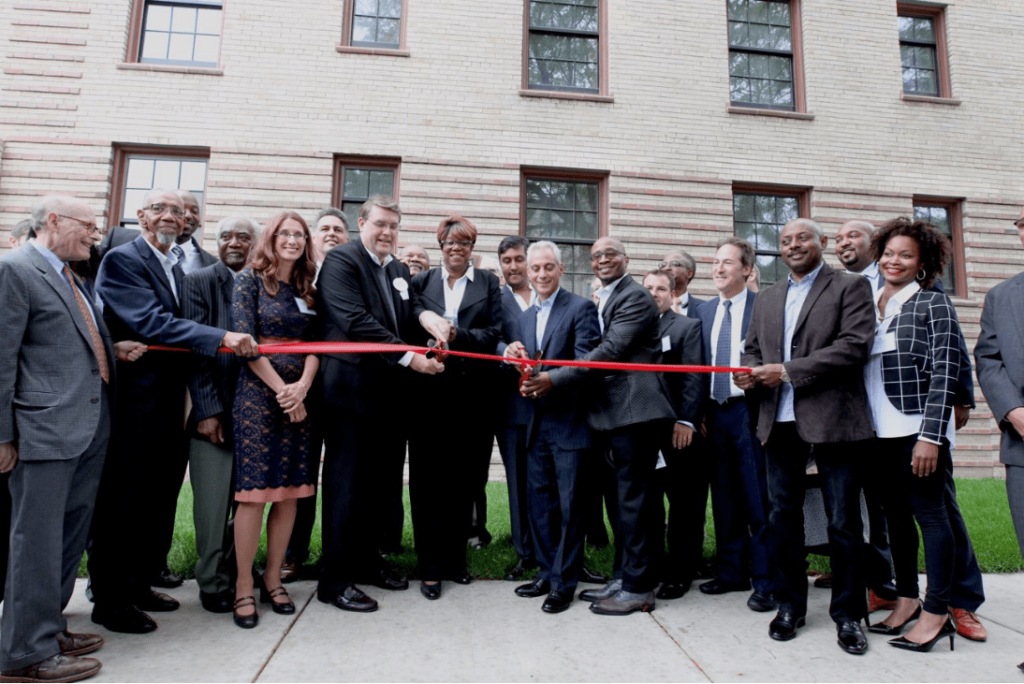
-
Mayor Rahm Emanuel today joined Chicago Housing Authority (CHA) CEO Eugene Jones, Ald. Pat Dowell (3rd) and community stakeholders to reopen the historic Rosenwald Courts.
-
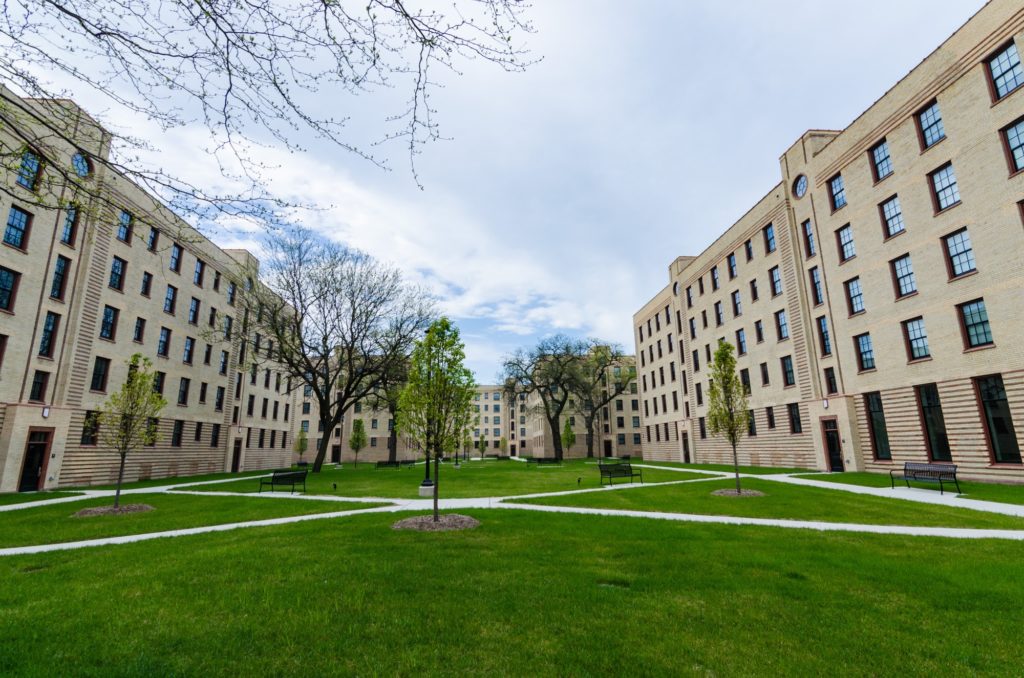
-
Renovated Rosenwald Court Apartments
Once the storefronts are open and renovation is complete, Aviva Kempner and The Ciesla Foundation hope to commemorate the restoration of the Rosenwald Courts by presenting screenings of bonus features in the building.
Following the tour of the Michigan Boulevard Apartments, a Rosenwald bonus feature screening was held at Chicago Sinai Congregation. The bonus features shown were “1919 Chicago Riots,” “Michigan Boulevard Apartments,” “Rabbi Emil Hirsch,” and “Rosenwald and the NAACP.”
After the screening, Rabbi Seth M. Limmer, Senior Rabbi at Chicago Congregation, Dr. Barbara Bowman, previous tenant of the Michigan Boulevard Apartments and daughter of architect Robert Taylor, Alderwoman Pat Dowell, and Peter Ascoli, grandson and biographer of Julius Rosenwald joined Aviva for a panel discussion.
Current tenants of the Rosenwald Courts and members of Temple Sinai were in the audience. Educator and interviewee Don Stewart and Rosenwald school alumni William Buchner also attended.
Audience members enjoyed a lively and enriching conversation as the panelists spoke on the lasting impact Rosenwald had on Chicago and how Rabbi Hirsch was a great source of inspiration for Rosenwald. The event was co-sponsored by the Anti-Defamation League.
by Cieslafdn | Apr 2, 2018 | Social Justice Work
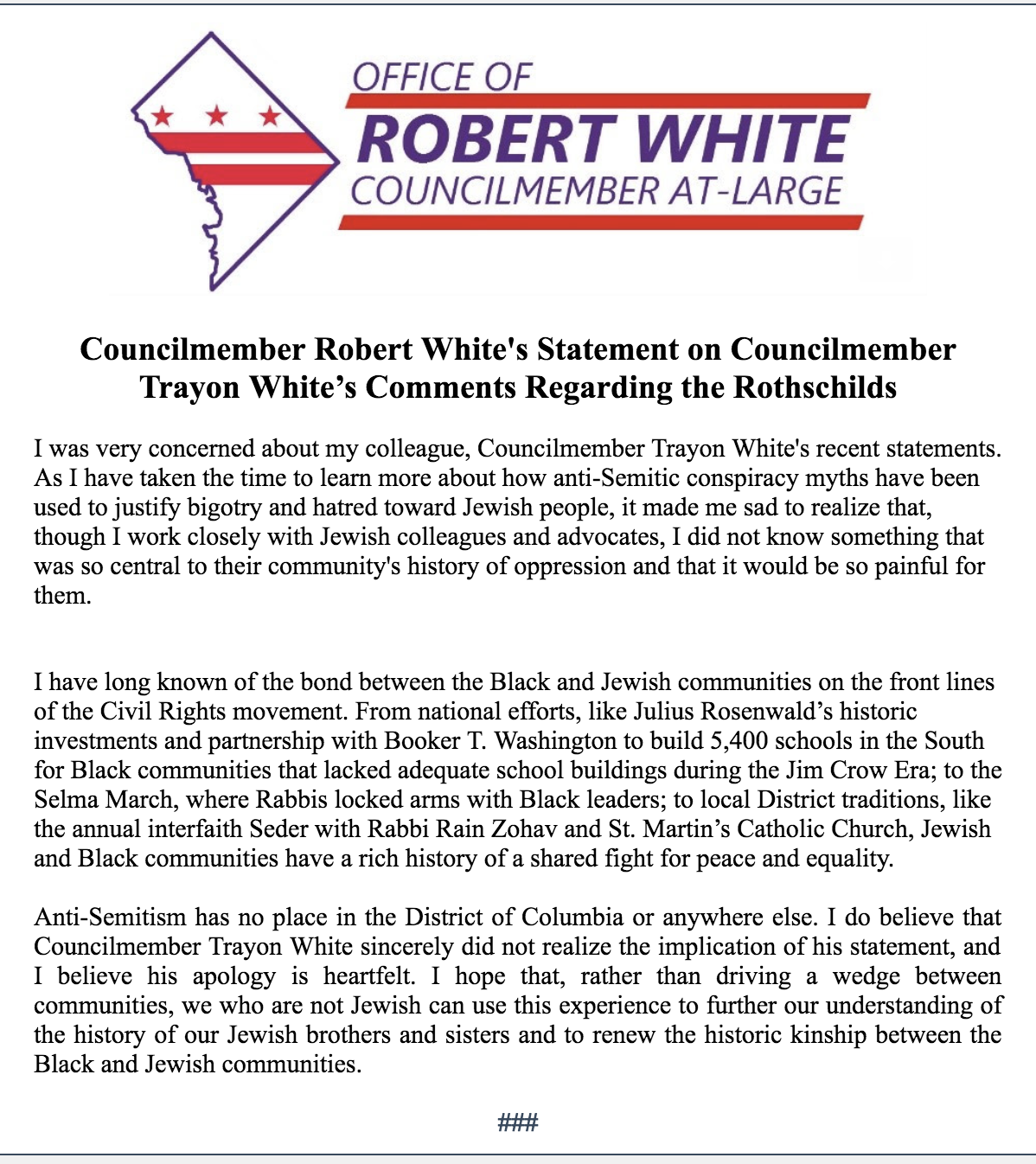
by Cieslafdn | Mar 20, 2018 | School Restorations
Click HERE to learn more.
by Cieslafdn | Mar 8, 2018 | Social Justice Work
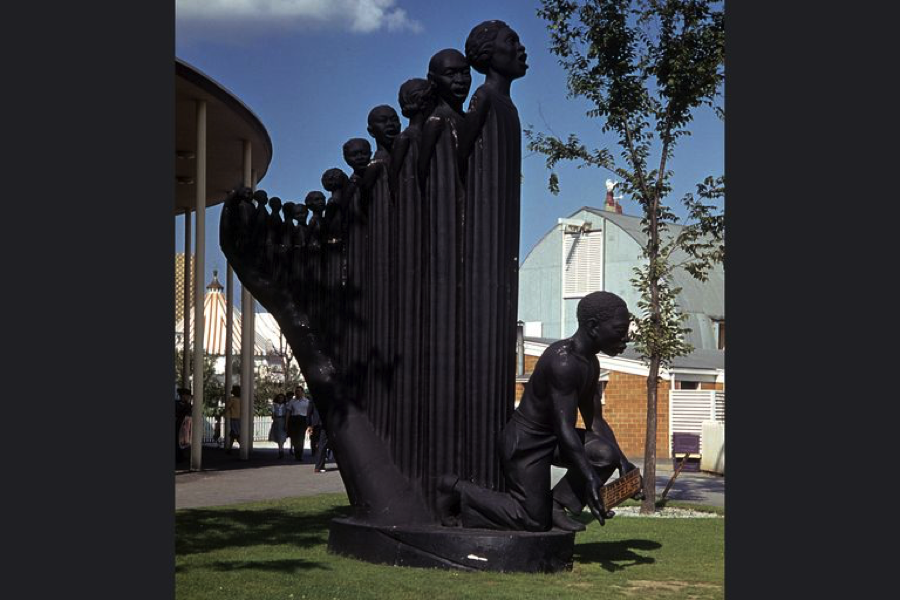
Happy International Women’s Day! Today we commemorate and celebrate all the notable women in history. However today, we’d like to particularly pay homage to the sculptor Augusta Savage, most known for her spectacular sculpture “The Harp” which was wrongly demolished at the closing of the 1939’s World Fair. “The Harp” was “a 16-foot-tall plaster piece and was Savage’s last major work. It featured 12 stylized black singers representing the strings of the harp. The arm of God forms the sounding board with a young man in front kneeling and holding sheets of music.”
It is the Ciesla Foundation’s mission to rebuild Savage’s sculpture not only for the purpose of acknowledging our national heritage but also to honor Augusta Savage and her legacy. Many refer to her as a legend in the African American community as despite her endless struggle and adversity, she persevered till the end of her life with creativity and resilience.
Read more about the Ciesla Foundation’s cause:“As Confederate Statues Fall, What Should Replace Them?”by Aviva Kempner.
by Cieslafdn | Feb 28, 2018 | Aviva Kempner
PreserveCast is where historic preservation and technology meet!
Hosted by Nick Redding of Preservation Maryland.
PreserveCast Ep. 60: The Rosenwald Schools with Aviva Kempner
Listen to the Podcast Here
by Cieslafdn | Feb 22, 2018 | Rosenwald Screenings
On February 10, 2018 the Maryland-National Capital Park and Planning Commission’s Prince George’s Publick Playhouse Theatre held a packed screening of Rosenwald arranged to honor Black History month.
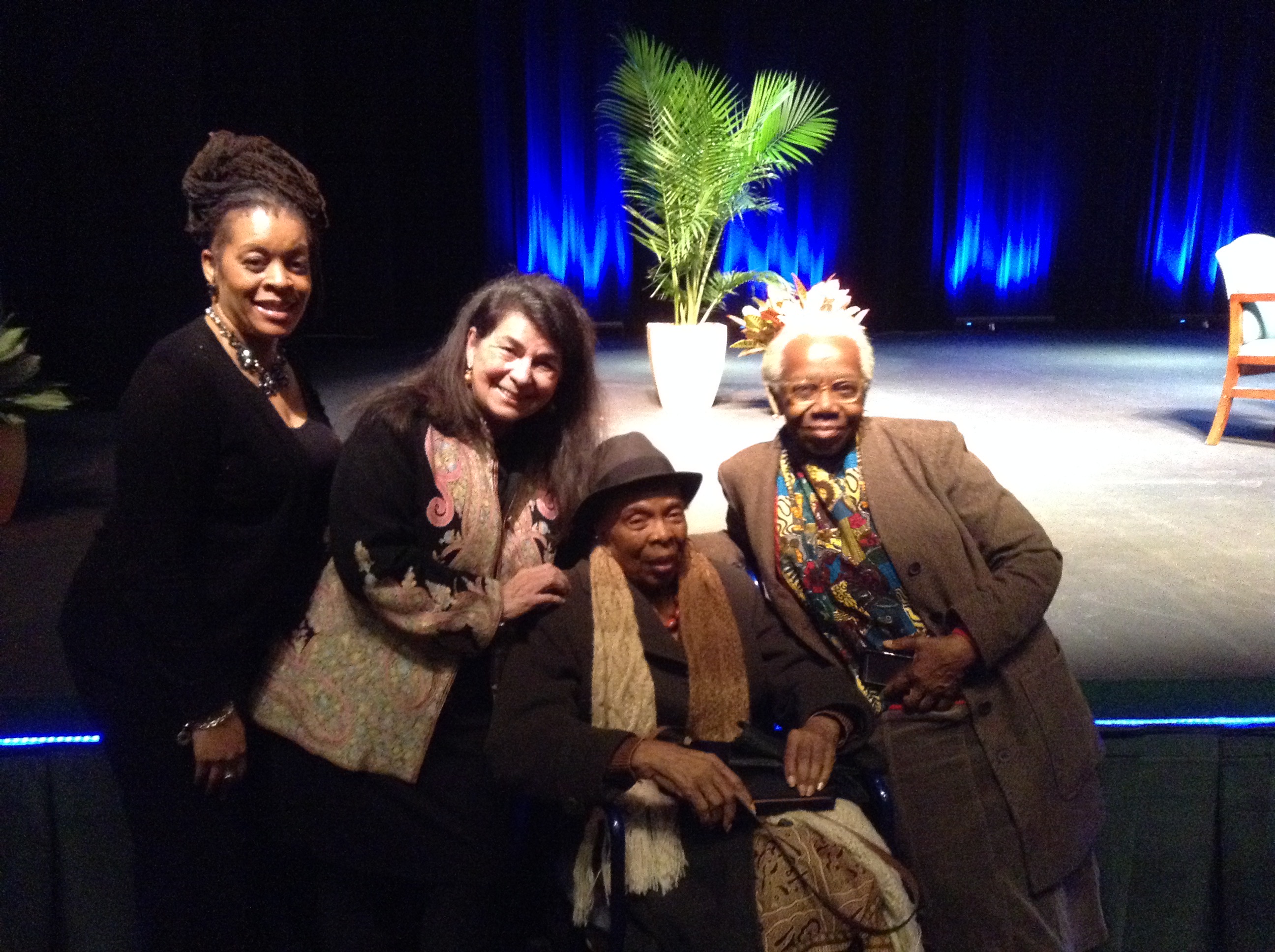
Prior to the screening, the film was introduced by Chairman of the Prince George’s County Planning Board Elizabeth M. Hewlett. Following the screening Aviva Kempner, director of Rosenwald; Stephanie Deutsch, author of “You Need a Schoolhouse: Booker T. Washington, Julius Rosenwald; and the Building of Schools for the Segregated South,” Charlene Drew Jarvis, daughter of Charles Drew, joined together for a panel discussion to discuss the legacy of Julius Rosenwald. Dennis A. Doster, Ph.D., Black History Program Manager moderated the panel.
Mildred Ridgley-Gray, known best for her work saving and restoring the Ridgeley Rosenwald School in Capitol Heights, Maryland was in the audience with her daughter LaVerne Gray. Mrs. Ridgley is also featured in several of the bonus features that accompany the Rosenwald DVD.
by Cieslafdn | Feb 20, 2018 | Screenings
On Sunday, February 4th 2018 the American Jewish Committee and Thursday Network Greater Washington Urban League organized a dynamite Black Jewish Relations panel at Social Tables in Washington D.C.
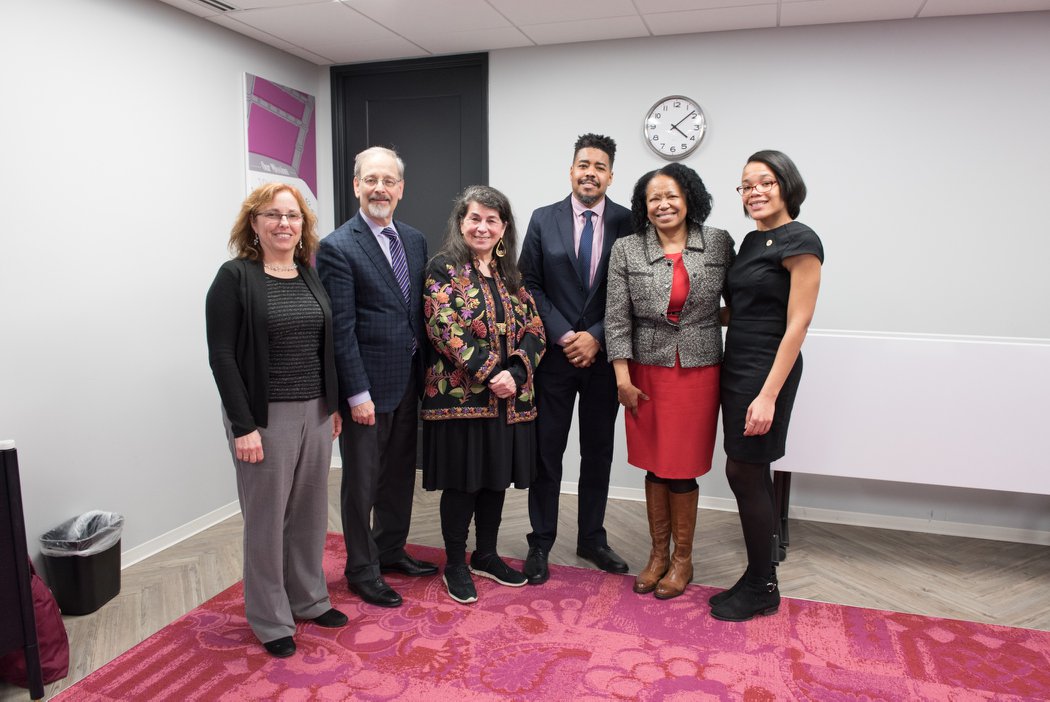
The panel featured filmmaker Aviva Kempner, professor and director at the center for Jewish Civilization Jacques Berlinerblau, Former Senior Advisor and Vice President of the W.K. Kellogg Foundation Dr. Gail C. Christopher, D.N, AJC Director of National and Legislative Affairs Richard Foltin, Professor of history at Trinity College Cheryl Greenberg, and associate professor of religion and government and director of graduate studies at Georgetown University Terrence L. Johnson.
The panel discussed the historical ties between the Jewish and African American communities, the importance of remembering their past allegiances as well as struggles throughout American history and preserving and repairing relations to prevent and combat the resurgence of hate and intolerance across the country.
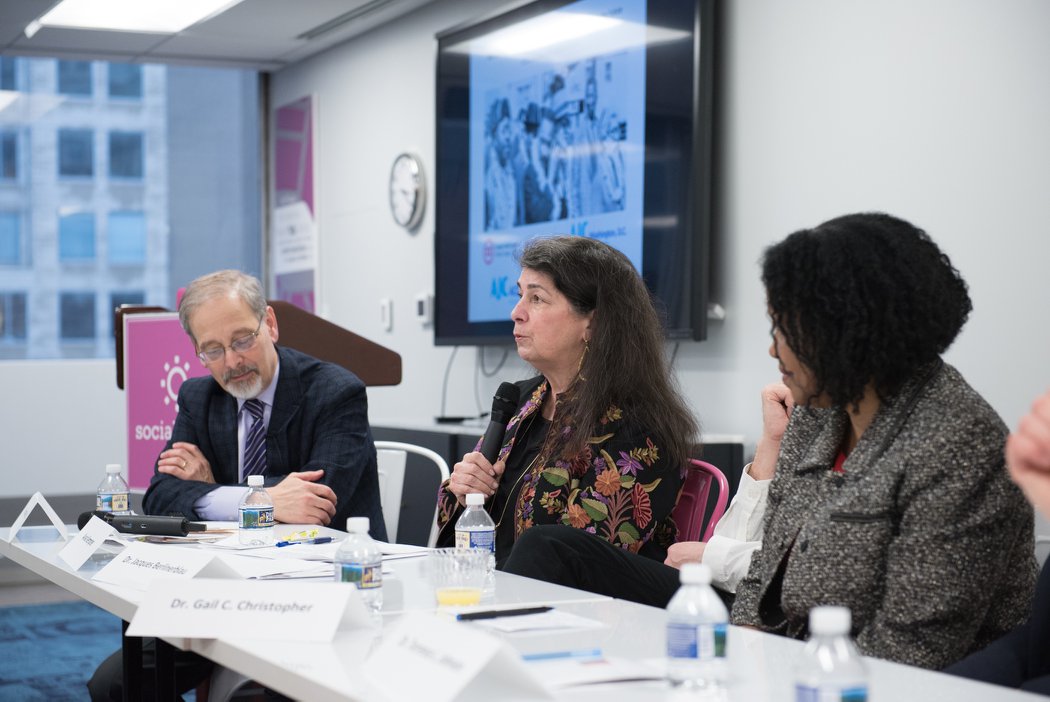
AJC Access DC empowers young Jewish professionals to engage with the world’s foremost politicians, interfaith partners, and cultural leaders as part of the global Jewish advocacy organization. They encourage and enable Jews in their 20s and 30s to develop strong relationships with partners to advocate on behalf of the Jewish community here in Washington D.C., and globally.
by Cieslafdn | Dec 14, 2017 | School Restorations
Read Full Article Here
“…Volunteers gathered last Saturday for a window raising in honor of the school’s 100th anniversary celebration. The Julius Rosenwald School Foundation of Northumberland County plans several renovation projects over the next few months including ceiling and floor restoration. To donate to the cause, go to jrsfnc.org, or call Brenda Yerby Bullock, 304-270-6716. Photo by Lisa Hinton-Valdrighi”
by Cieslafdn | Nov 30, 2017 | Aviva Kempner, Social Justice Work
By AVIVA KEMPNER NOV. 29, 2017 New York Times
View Link to Online Article

It’s heartening that so many Confederate statues are being taken down in the South. But that’s not enough. We must also restore pieces of our national heritage that were wrongly destroyed. First on the list should be “The Harp,” a magnificent work by the noted African-American sculptor Augusta Savage that was demolished at the closing of the 1939 World’s Fair in New York.
Savage was born in Green Cove Springs, Fla., in 1892. She moved to New York in 1921, where she studied at Cooper Union. Around 1923, Savage was rejected by a summer program at the Fontainebleau School of Fine Arts in France because of her race. Savage publicly protested, and the rejection became a cause célèbre covered by newspapers on both sides of the Atlantic.
But Savage didn’t let this snub deter her. During the Harlem Renaissance, she established herself as an artist and teacher, creating busts of prominent African-Americans like W.E.B. Du Bois and Marcus Garvey.
In the 1920s she produced “Gamin,” a plaster bust likely based on her nephew now in the Smithsonian American Art Museum, which helped her win a Julius Rosenwald Fellowship to study art in Paris in 1929.
With the Rosenwald grant, Savage made works that were displayed at the Grand Palais in Paris. She went on to win two additional Rosenwald Fellowships, as well as a grant from the Carnegie Foundation. These awards permitted her to stay in Europe for a bit longer, allowing her to escape American racism.
Photo

Augusta Savage working on a sculpture in New York in 1938.
Credit
Hansel Mieth/The LIFE Picture Collection/Getty Images
Savage returned to New York in 1932. Soon afterward, she founded the Savage Studio of Arts and Crafts, where artists like Jacob Lawrence and Norman Lewis developed their skills.
Her big break came in 1937, when Savage was commissioned by the World’s Fair to create a sculpture which would symbolize the musical works done by African- Americans. She took a two-year leave of absence from a job as director of the Harlem Community Art Center to concentrate on this project.
Savage called her sculpture “Lift Every Voice and Sing” after James Weldon Johnson and John Rosamond Johnson’s song, the Negro national anthem. But the organizing committee renamed her piece “The Harp” against her wishes.
A 16-foot-tall plaster piece, “The Harp” was Savage’s last major work. It featured 12 stylized black singers representing the strings of the harp. The arm of God forms the sounding board with a young man in front kneeling and holding sheets of music.
It was one of the most popular pieces of art displayed at the World’s Fair. “Miss Savage’s creation stands in a niche at the focal point of the building front and is commented upon by practically everyone who passes,” wrote the journalist Lillian Johnson in The Afro-American, a Baltimore newspaper.
Despite the widespread praise, Savage lacked the money to store her the sculpture or have it cast in bronze. It was bulldozed at the end of the fair. (The Schomburg Center in Harlem does have a small bronze version of the sculpture.)
It gets worse. After the fair, Savage discovered that the Harlem Community Arts Center had given her job to someone else. She tried to create independent art centers in Harlem, but didn’t have enough money to sustain them. Savage died in March 27, 1962, after a long battle with cancer.
While Savage is gone, her great work, “The Harp” need not be lost forever. It should be recreated and displayed in New York City, where it had such an impact in 1939. The City Council should earmark funds to do this.
Or better yet, how about placing a second replica of “The Harp” in front of the new National Museum of African American History and Culture in Washington for all to see? It would be a fitting tribute to Savage, whom the art historian Richard Powell calls “a legend in African-American art history because so much of her life was filled with struggle, with perseverance and with creativity, all mixed up.”
Aviva Kempner is the director of the documentary “Rosenwald” about the philanthropist Julius Rosenwald.
Follow The New York Times Opinion section on Facebook and Twitter (@NYTopinion), and sign up for the Opinion Today newsletter.










Recent Comments